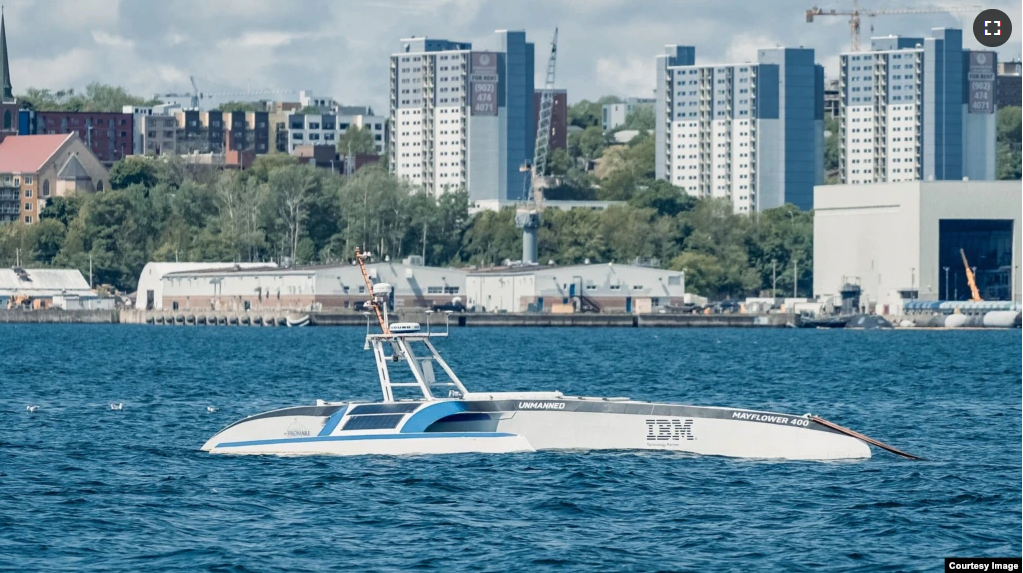Two different ships have used autonomous sailing technology to complete trips across world oceans for the first time.
One of the projects involved the Mayflower Autonomous Ship. It is a completely autonomous ocean research ship powered by artificial intelligence (AI) technology.
The Mayflower recently completed a five-week trip across the Atlantic Ocean without any human crew members. It launched from the British port of Plymouth on April 27 and arrived in the eastern Canadian city of Halifax on June 5.
The 15-meter Mayflower is named after a ship that carried a group of European settlers from Plymouth to North America more than 400 years ago. That famous trip, in 1620, prepared the way for Britain’s colonization of what Europeans called the New World.
The Mayflower Autonomous Ship is operated by ocean research group ProMare and American technology company IBM.
Rob High is an IBM executive who helped lead the Mayflower project. He told the Associated Press (AP) that the ship’s autonomous technology system “worked perfectly” during its trip across the Atlantic. He added, however, that “Mechanically, we did run into problems.”
The Mayflower experienced mechanical issues on its latest trip, as well as an earlier attempt to cross the Atlantic. The first attempt, in June 2021, was canceled after a “minor mechanical issue” forced the ship to return to Plymouth.
Then, during the latest trip, a problem with the ship’s power system led project organizers to send the ship to Portugal’s Azores islands in the mid-Atlantic. A team member was flown to the area to perform emergency repairs.
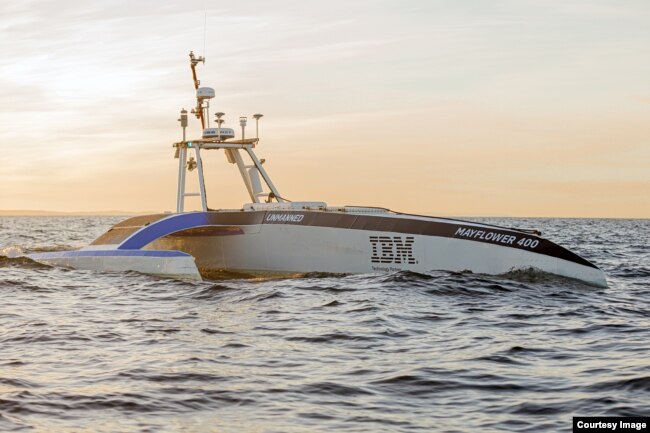
More troubles came in late May when the Mayflower developed another power issue. That problem was also repaired. But the team decided to send the ship on a new path to Halifax. This is because the Canadian port was closer than its planned target in the northeastern state of Virginia.
Experts say AI software is getting much better at helping self-sailing ships understand their surroundings and pilot themselves. But most autonomous systems cannot repair themselves when mechanical hardware fails.
The Mayflower is equipped with instruments designed to measure the health of ocean waters. ProMare and IBM hope it will be the first in a new generation of crewless, ocean traveling machines. They say such ships could be used to explore parts of oceans that are too difficult or dangerous for people to reach.
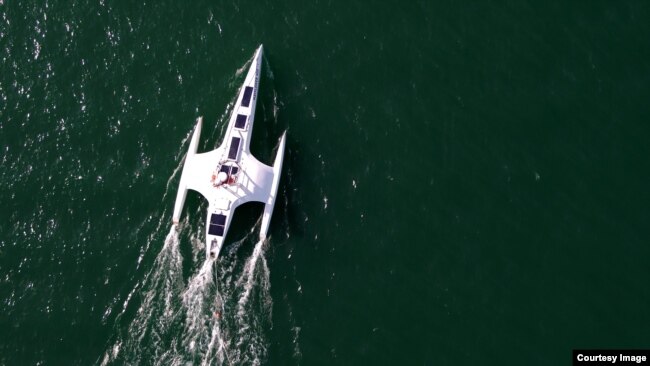
South Korean tanker
In another demonstration of the technology, the owners of a large tanker say the ship recently sailed by itself for more than 10,000 kilometers across the Pacific Ocean.
That ship, designed to transport natural gas, is operated by South Korea’s SK Shipping. The tanker, called Prism Courage, is equipped with an autonomous navigation system developed by Hyundai-owned technology company Avikus.
The company announced in a statement that the 300-meter-long ship successfully used its autonomous sailing system during about half of a 20,000-kilometer trans-Pacific trip.
The tanker left the port city of Freeport, Texas on May 1. It arrived at a port on South Korea’s southwest coast on June 2.
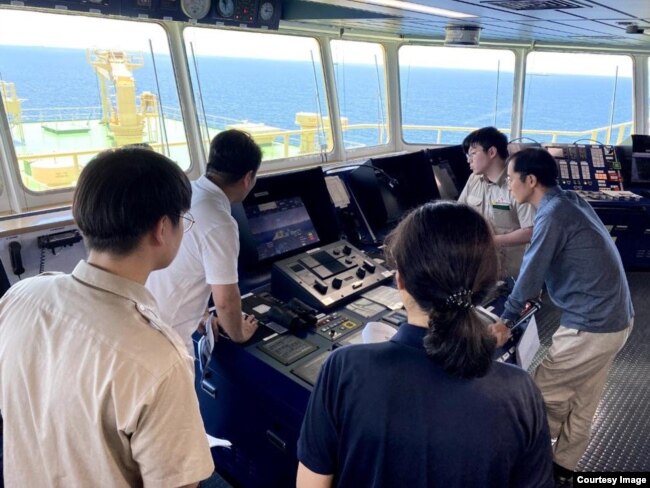
During the trip, Prism Courage’s autonomous navigation system recognized the presence of nearby ships to avoid crashes more than 100 times, Avikus said.
In addition, the autonomous system is designed to choose the most ideal travel paths. This system resulted in a 7 percent improvement in fuel efficiency, while reducing gas emissions by about five percent, the company said.
Avikus said it believes autonomous navigation technology can help solve worker shortages in the shipping industry. It can also reduce pollutants and improve safety “by completely removing the possibility of human errors.”
The company said it plans to keep developing the technology for large transport ships as well as for smaller pleasure boats.
I’m Bryan Lynn.
Bryan Lynn wrote this story for VOA Learning English, based on reports from The Associated Press, IBM and Avikus/Hyundai.
We want to hear from you. Write to us in the Comments section, and visit WWW.VOA-STORY.COM
Quiz – Two Self-Sailing Ships Cross World Oceans for First Time
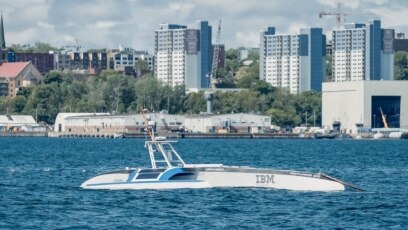
Start the Quiz to find out
_______________________________________________________________________
Words in This Story
autonomous – adj. independent and having the power to operate automatically without human involvement
artificial intelligence – n. the development of computer systems with the ability to perform work that normally requires human intelligence
mechanical – n. relating to or operated by machines
navigate – v. to find the right direction for traveling by using maps or other equipment
efficient – adj. working well and not wasting time or energy
